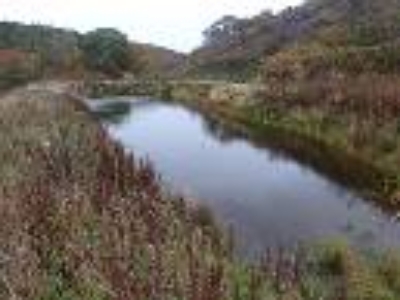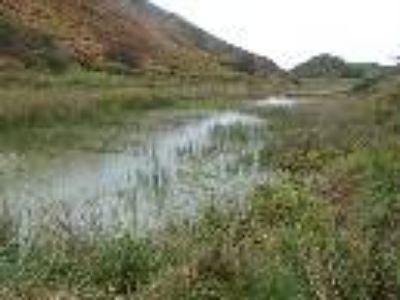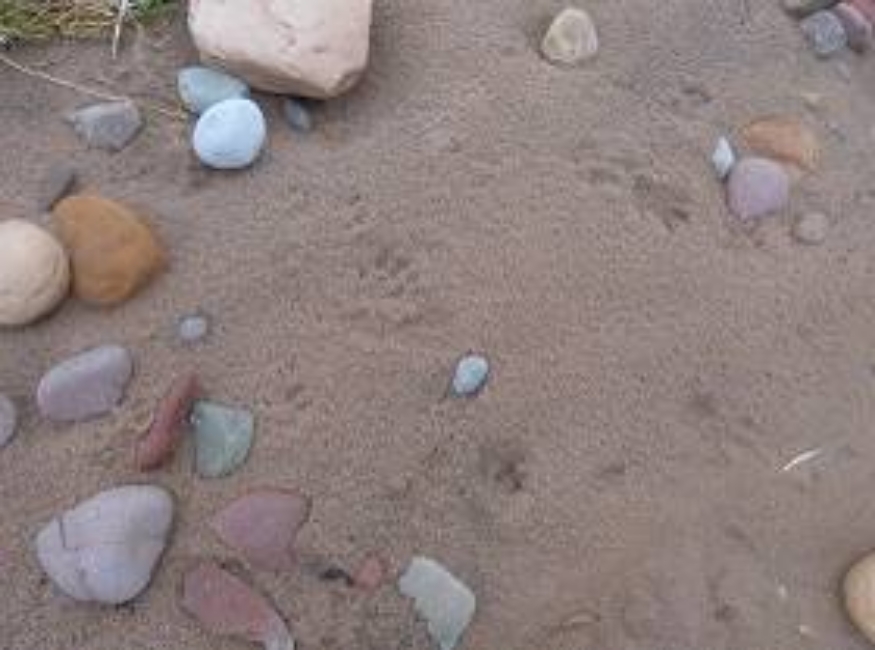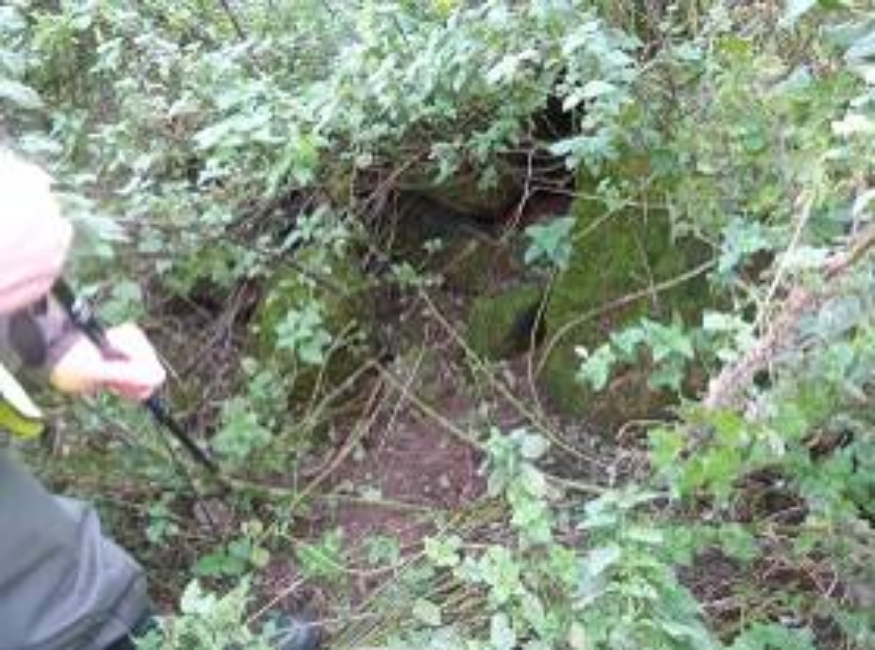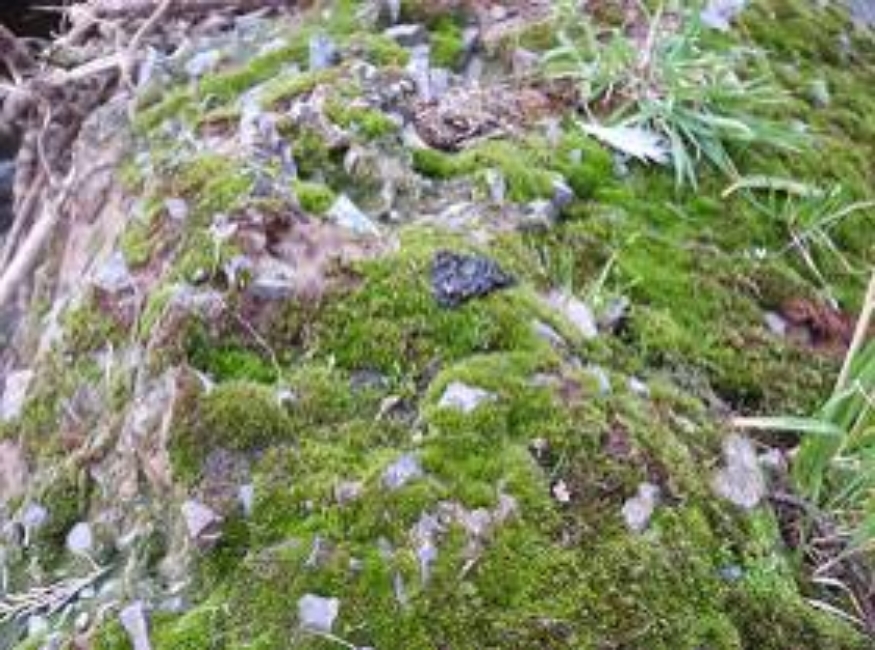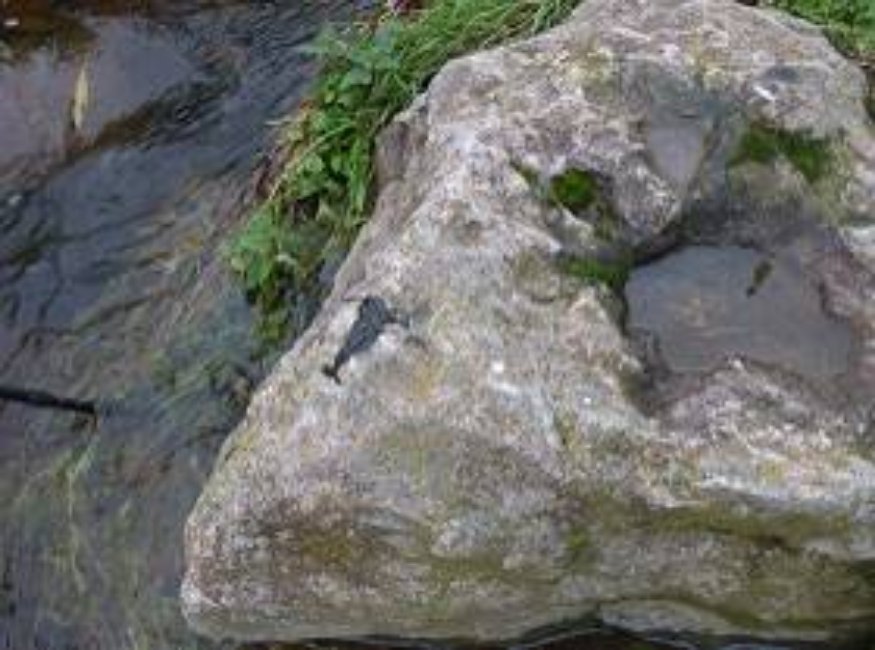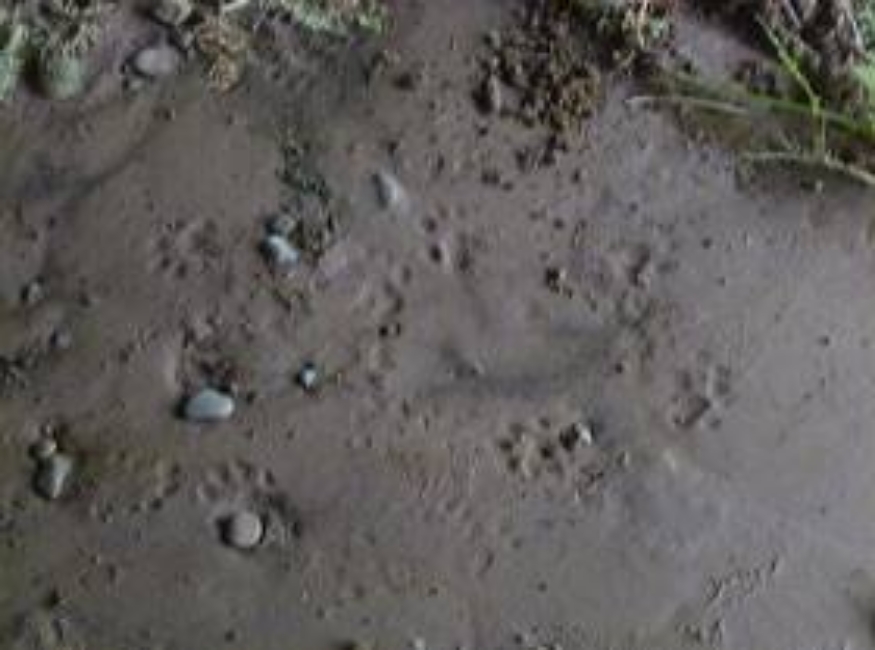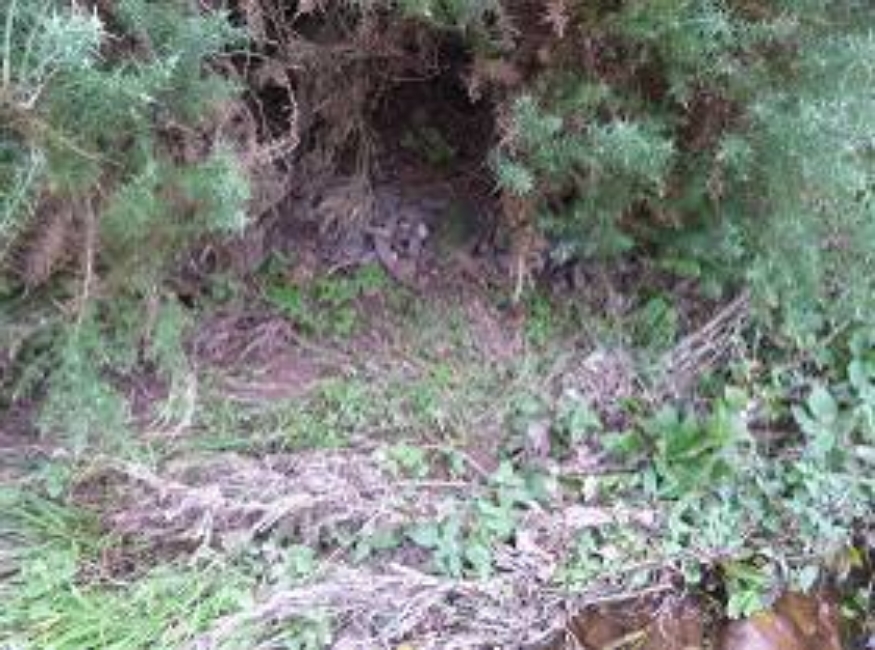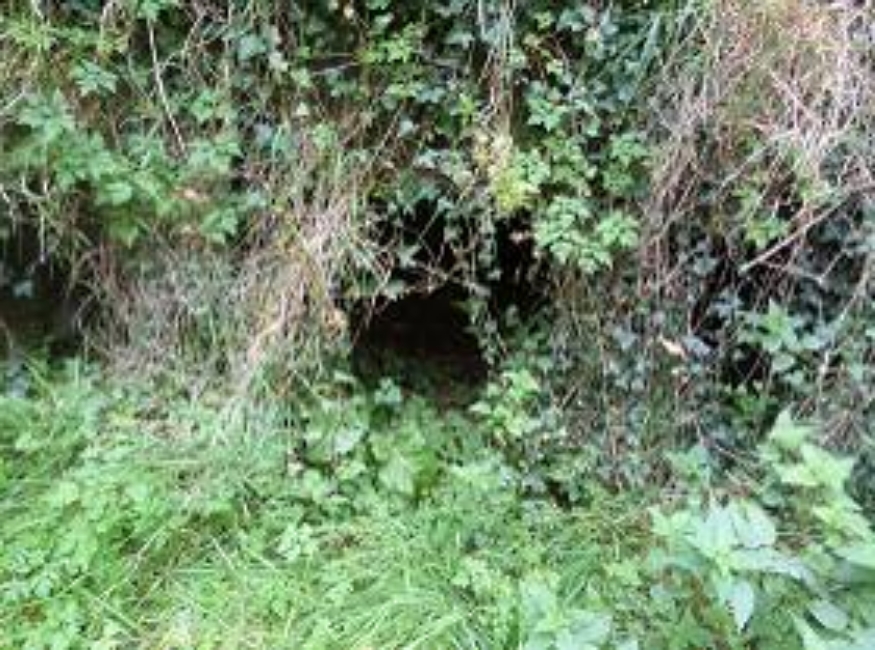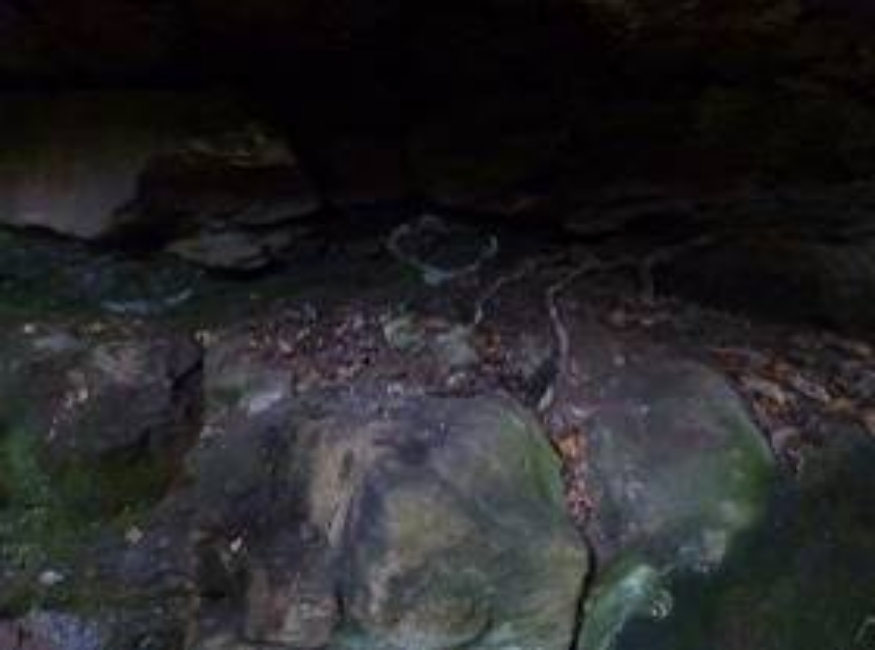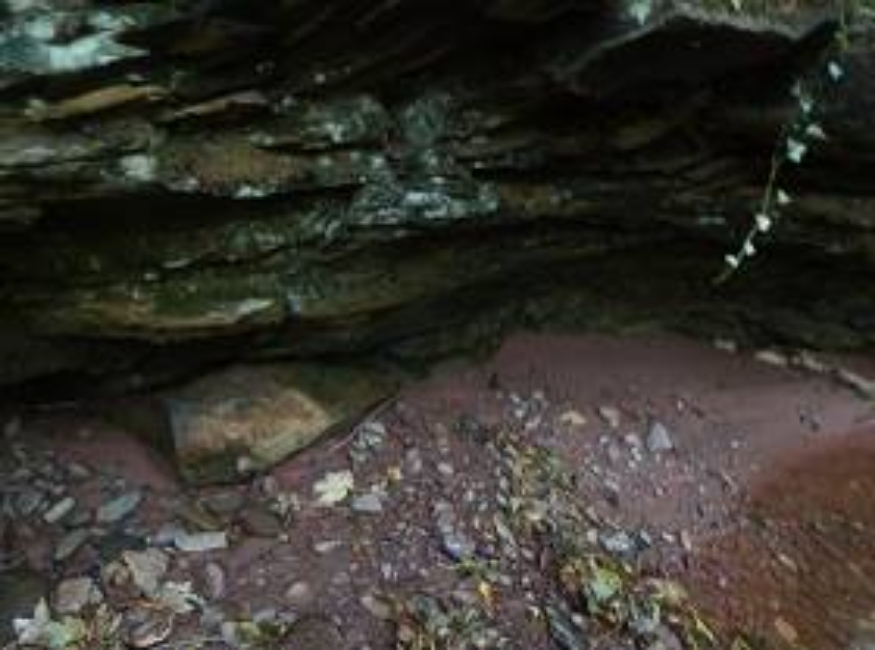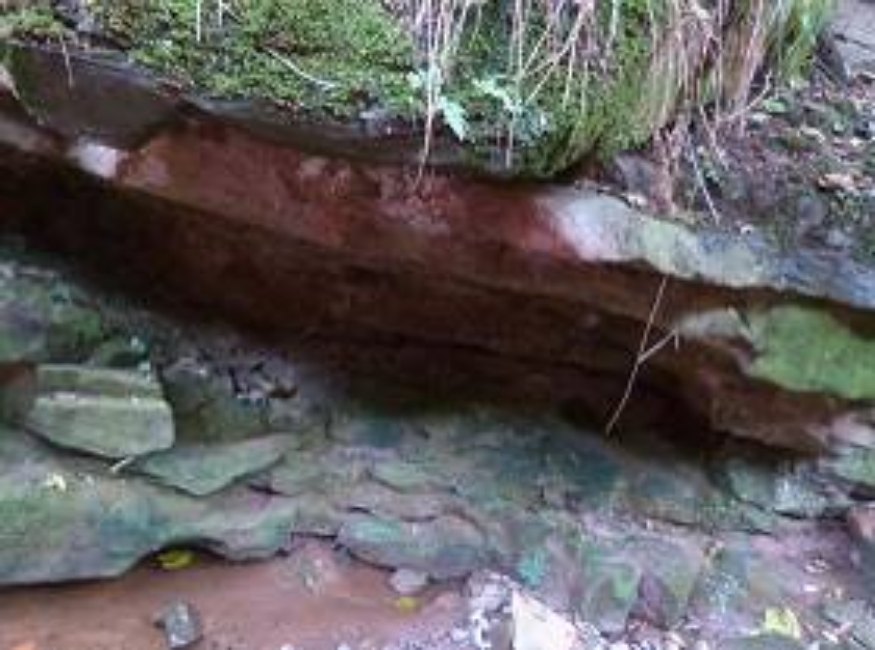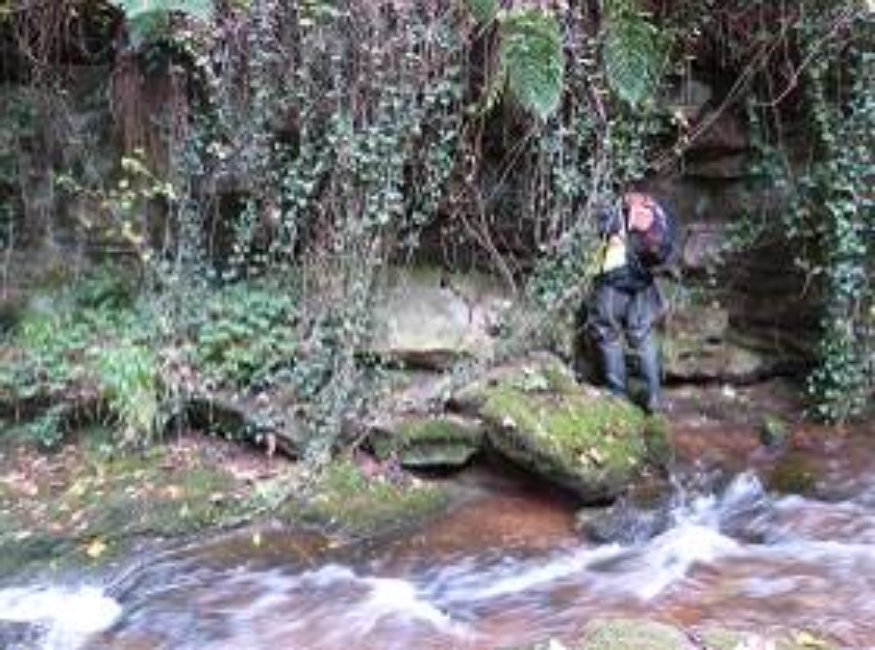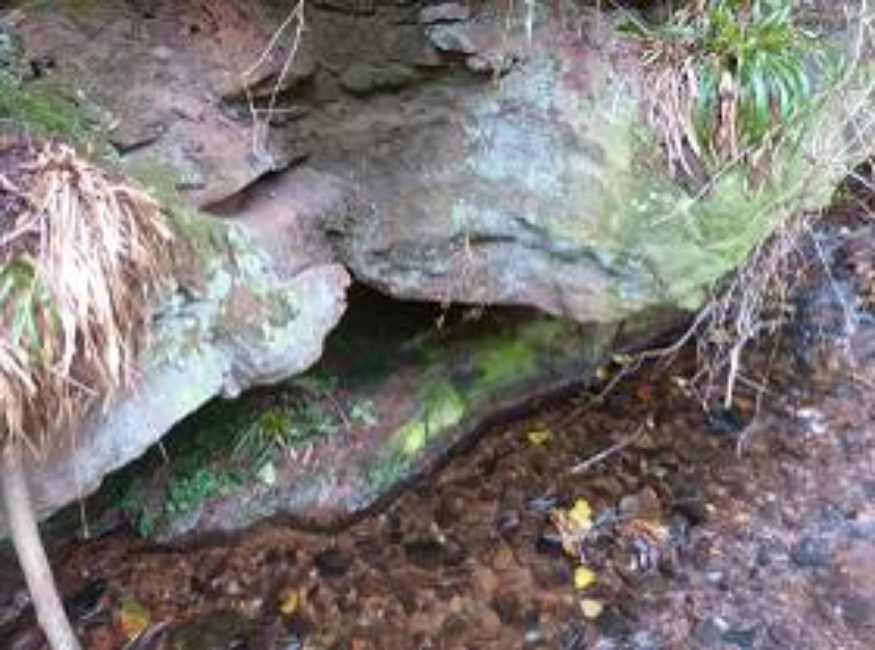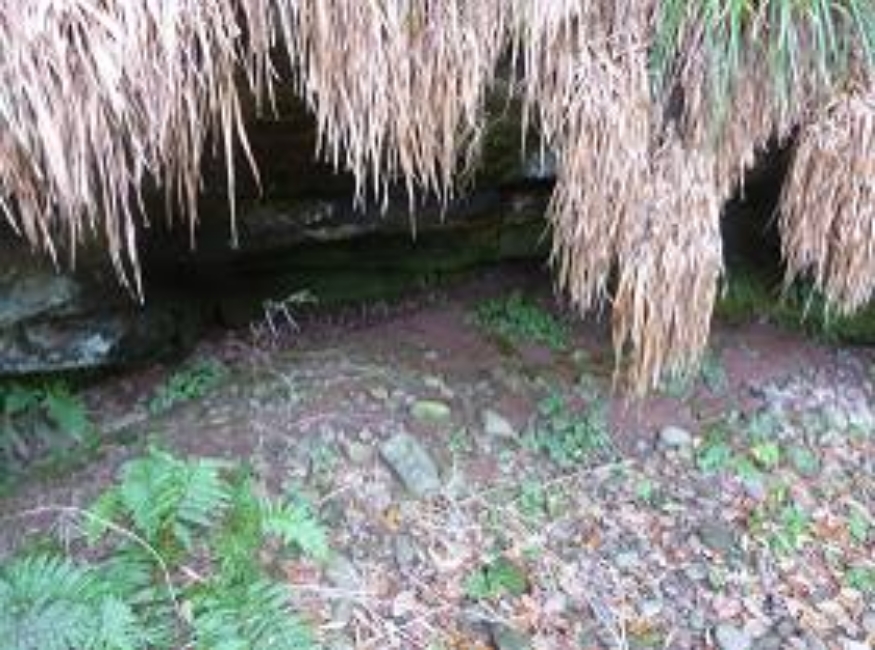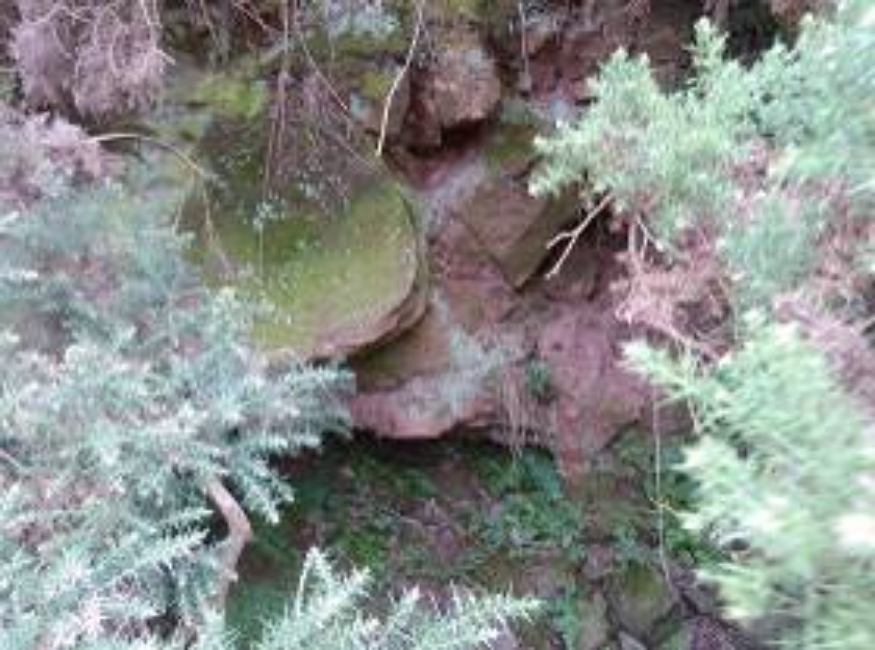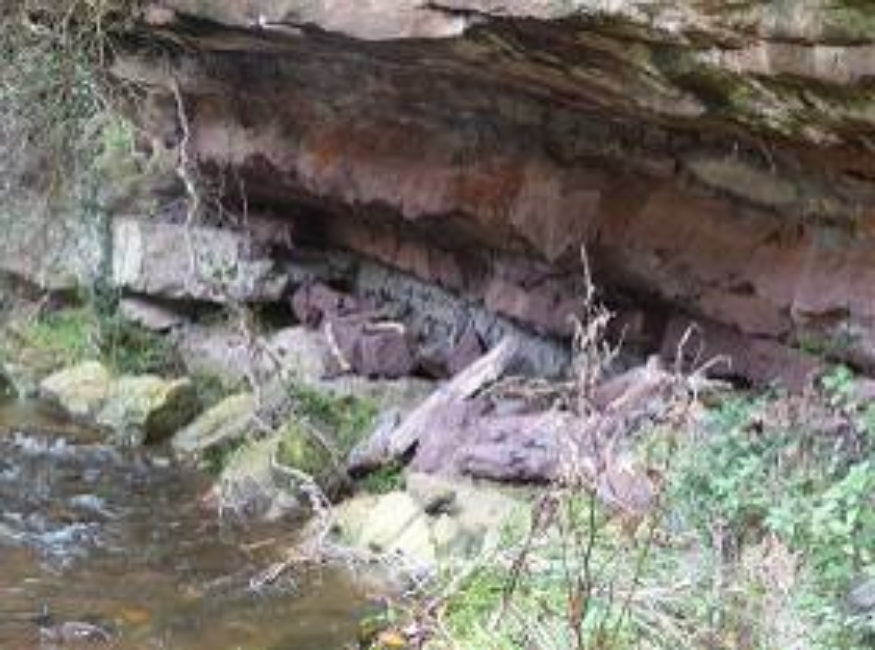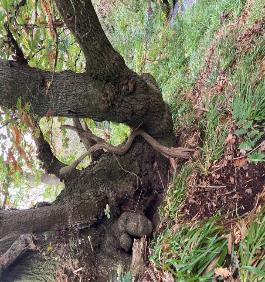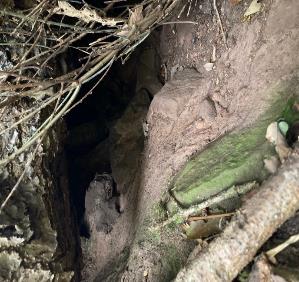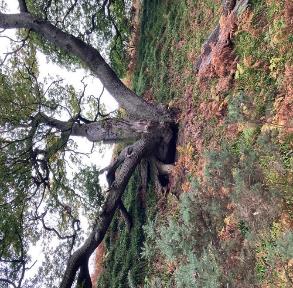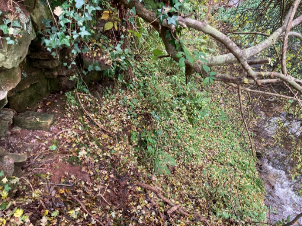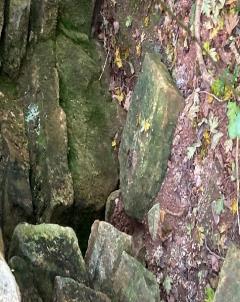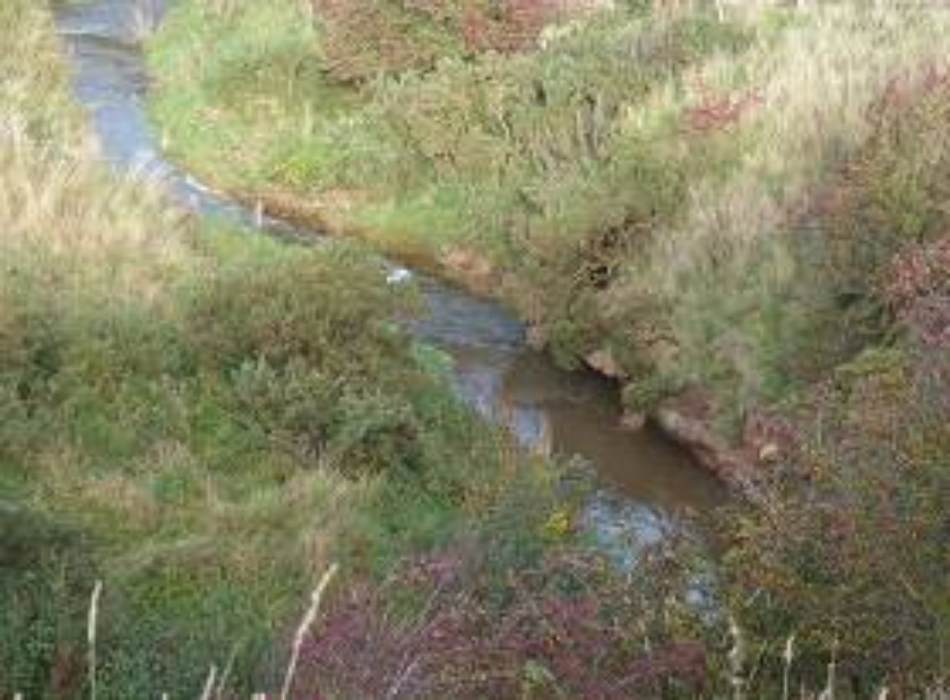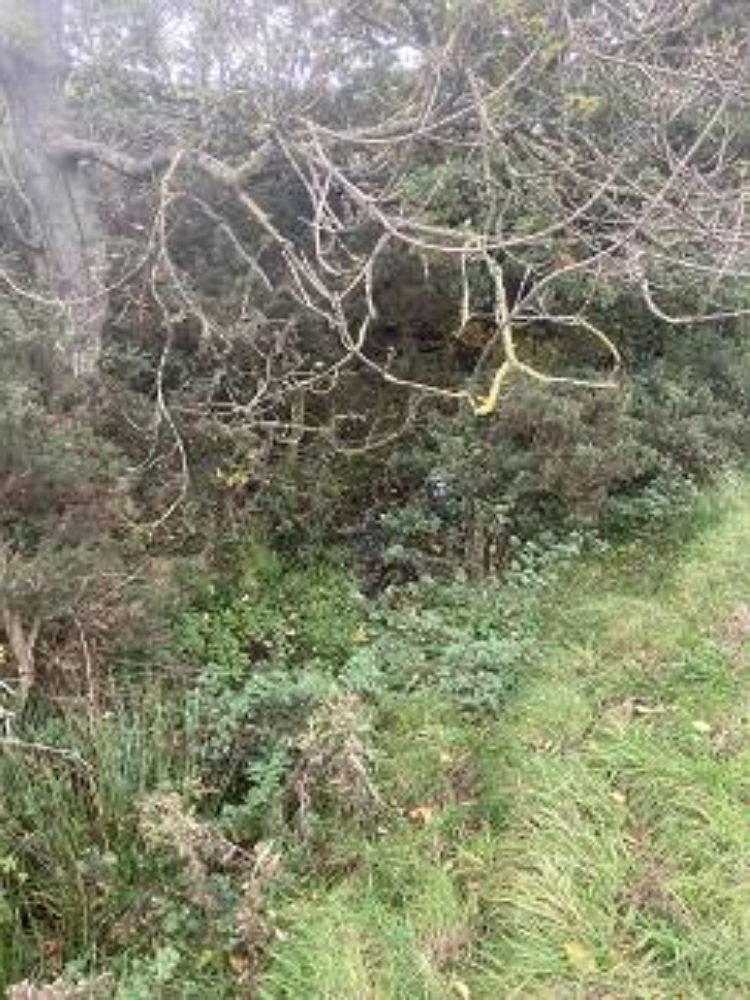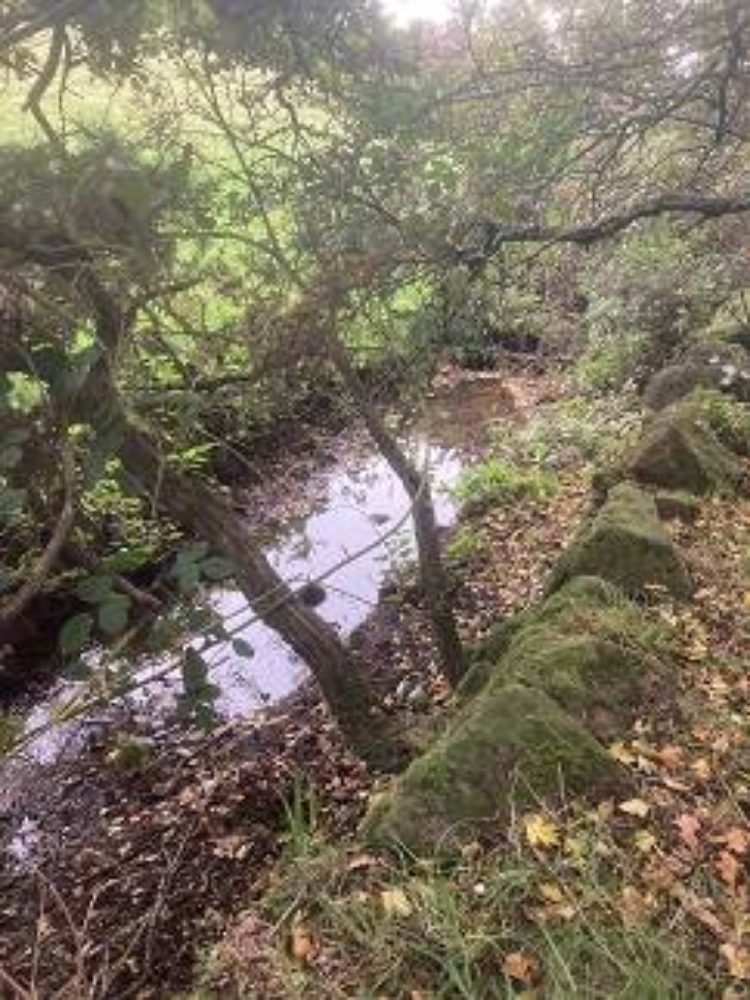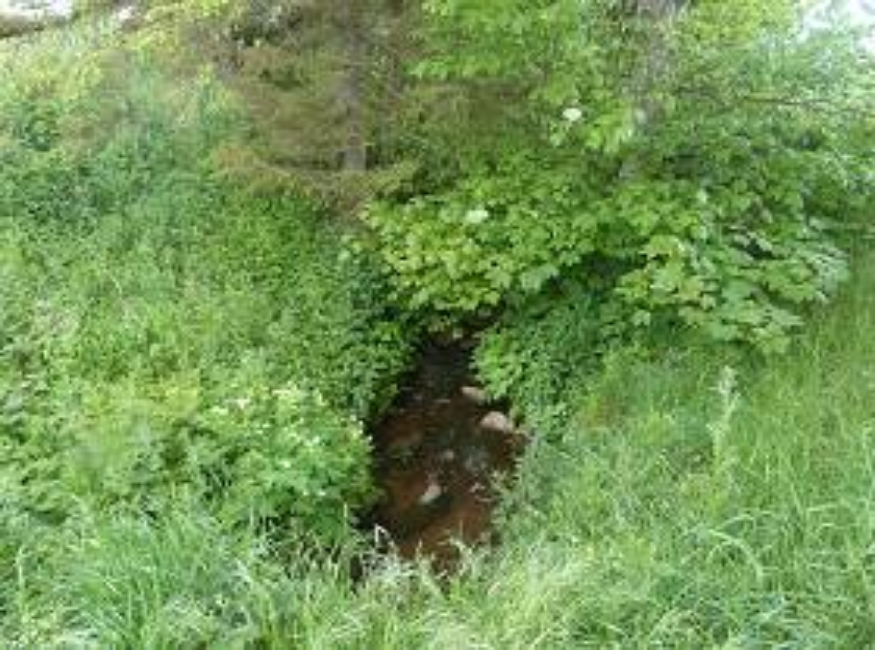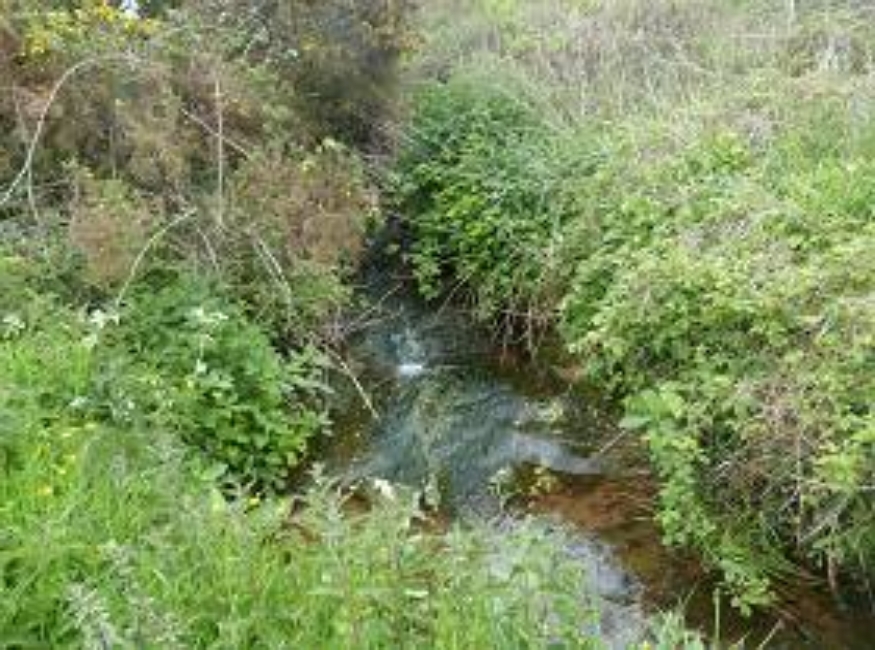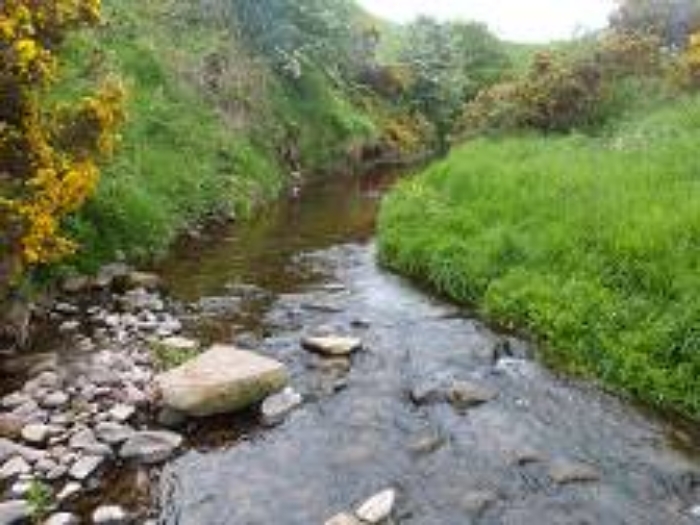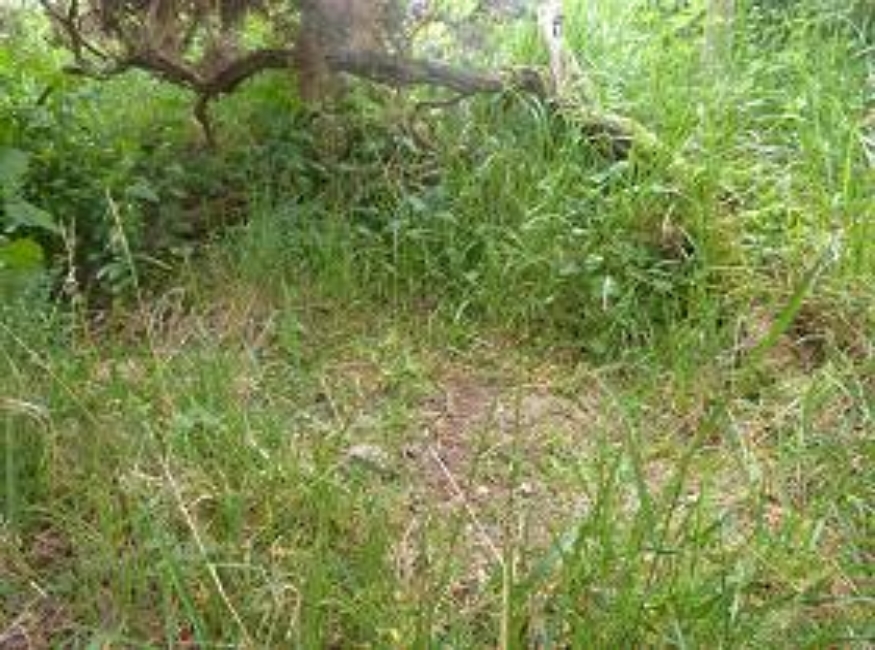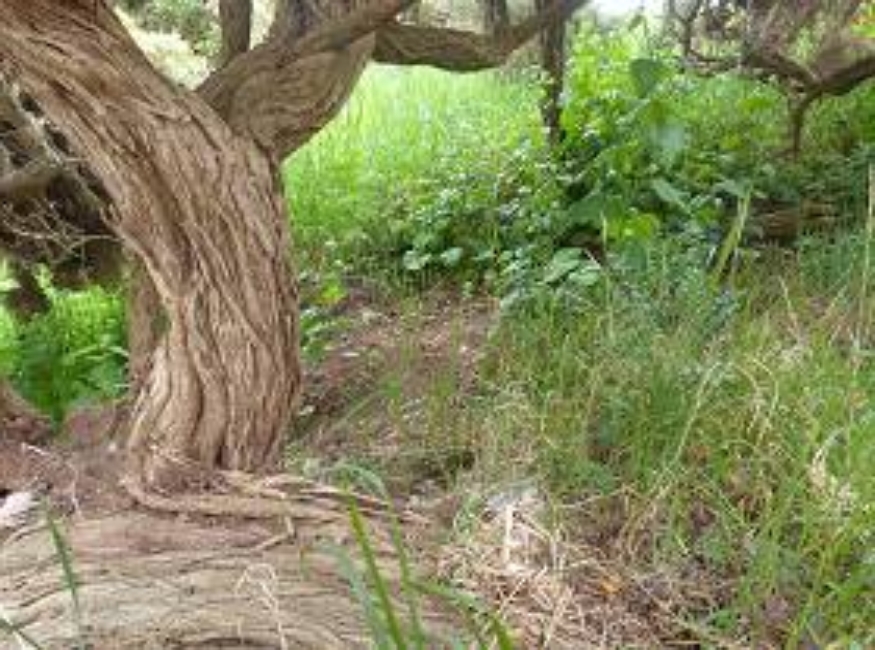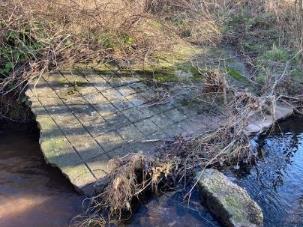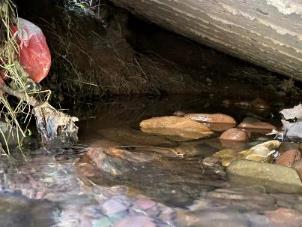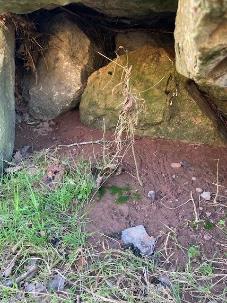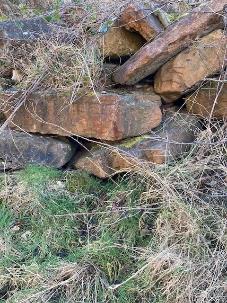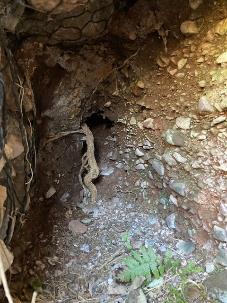1. Introduction
1.1 Overview
1.1 Overview
ITPEnergised was appointed by SSE Renewables to undertake protected species surveys for the onshore component of the proposed Berwick Bank offshore windfarm development at Torness, southeast of Dunbar, East Lothian (hereafter referred to as the ‘Site’). The site has central Ordnance Grid Reference: NT 74632 73282.
ITPEnergised undertook a Preliminary Ecological Appraisal of the Site in 2020 (ITPEnergised, 2022a) and habitats suitable to support bats, badger (Meles meles), otter (Lutra lutra), water vole (Arvicola amphibius) and great crested newt (Triturus cristatus) were identified within the Site.
Targeted surveys for these species/species group were therefore undertaken. The results of the badger, otter, water vole and great crested newt surveys are presented within this report, whereas the bat survey results are presented within Technical Appendix 7.3 (ITPEnergised, 2022b). The Study Area incorporated the application boundary and up to a 500m buffer (where accessible) dependent on the species of interest (as shown in Figure 7.2.1).
This report describes the methods used to gather and record information for the Site and summarises the findings of the study.
1.2 Site Description
1.2 Site Description
The Site is approximately 599.6 hectares (ha) in size and extends from north-west of Skateraw Harbour to Bilsdean in the south. The A1 trunk road and the East Coast Main Line (ECML) railway pass through the Site from the north-west to the south-east. The Site largely comprises agricultural land with a mixture of arable and grazed fields. Braidwood Burn and Ogle Burn run through the western reaches of the Site, Thornton Burn and Branxton Burn runs through the centre of the Site, Dry Burn runs through the north of the Site and Bilsdean Burn runs through the south of the Site. These watercourses are commonly associated with corridors of scrub and mixed woodland habitat. The Site also encompasses a number of small hamlets and farm steadings. Larger settlements include Crowhill, Branxton and Lawfield to the south of the A1 and Skateraw and Thorntonloch to the north. The Site includes areas of the coastline the landfall locations to the north of Torness Point.
2. Legislation
2. Legislation
2.1 Legislation
2.1 Legislation
Full consideration has been given to all relevant nature conservation legislation when carrying out this assessment. This includes the following:
The Conservation of Natural Habitats and Wild Flora and Fauna (the ‘Habitats Directive’) 1992 (92/43/3EEC), transposed into domestic law by the Conservation (Natural Habitats, &c.) Regulations 1994 (as amended);
Directive (2009/147/EC) of the European Parliament and of the Council on the conservation of wild birds (the ‘Birds Directive’), transposed into domestic law by the Conservation (Natural Habitats, &c.) Regulations 1994 (as amended);
The Conservation (Natural Habitats, &c.) Regulations 1994 (as amended);
Wildlife and Countryside Act 1981 (as amended) (WCA);
The Nature Conservation (Scotland) Act 2004 (as amended);
The Wildlife and Natural Environment (Scotland) (WANE) Act, 2011 (as amended); and
The Protection of Badgers Act 1992, as amended by the Wildlife and Natural Environment (Scotland) Act 2011.
Legislation specific to badger, otter, water vole and great crested newt including details of all actions which would constitute an offence, is detailed fully within Appendix A.
2.2 Good Practice Ecological Guidance
2.2 Good Practice Ecological Guidance
Cognisance has been taken of the following best practice guidelines and survey method publications in relation to otter, water vole, great crested newts and badgers:
2.2.1 Badger survey
Competencies for Species Survey: Badger (CIEEM, 2013a); and
Surveying for Badgers: Good Practice Guidelines (Scottish Badgers, 2018).
2.2.2 Otter
Competencies for Species Survey: Otter (CIEEM, 2013b); and
Monitoring the Otter Lutra lutra (Chanin, 2003).
2.2.3 Water vole
Competencies for Species Survey: Water Vole (CIEEM, 2013c); and
The Water Vole Mitigation Handbook (Dean et al., 2016).
2.2.4 Great crested Newt
Competencies for Species Survey: Great Crested Newt (CIEEM, 2013d);
Evaluating the suitability of habitat for the great crested newt (Triturus cristatus) (Oldham et al., 2000); and
Great Crested Newt Conservation Handbook, Froglife, Halesworth (Langton et al., 2001).
3. Methods
3. Methods
3.1 Desk Study
3.1 Desk Study
A review of desk study data was completed to gather baseline information on badger, otter, water vole and great crested newts. The following resource was consulted:
ITPEnergised (2022a). Berwick Bank EIA, Ecology Chapter, Technical Appendix 7.1, Preliminary Ecological Appraisal. ITPEnergised, Edinburgh.
3.2 Badger
3.2 Badger
3.2.1 Field survey
Field surveys were undertaken on 5th and 6th October 2020 by Stuart Abernethy, Ecologist, with update surveys completed on 13th and 17th September 2021. Following a revision to the application boundary, additional surveys of an area to the south-west of Skateraw were undertaken on 4th February 2022 by Jenny Diack, Senior Ecologist, and Helen Lamont, Ecologist.
As part of the survey, field signs including setts, day beds, latrines, evidence of foraging, badger paths, scratching posts, hair and footprints, were actively searched for within the Site and a 100 m buffer. The survey was based on the methods described by Scottish Badgers (2018). The survey included all hedgerows, field boundaries, watercourses, paths and other linear features within the Study Area.
On identification of a badger sett, the observer noted the number of entrances, in addition to a description of the activity level and status of the sett wherever possible. The status of a sett was evaluated and determined, wherever possible, based on descriptions presented in Scottish Badgers Good Practice Guidelines (2018), which assigns setts into one of four categories:
Main sett (used throughout the year and constitutes the main breeding sett);
Annexe sett (forms part of the main sett area, but is not directly linked by an underground passage to the main sett, either due to a barrier (e.g. separated by a watercourse or ditch) or by distance);
Subsidiary sett (offers an alternative large sett complex to the main sett but is usually although not always at least 50 m away and are not always obviously linked by a well-used path); and
Outlier sett (often comprising just one or two holes and is infrequently used by badgers).
Each sett entrance is classified according to its degree of usage:
Well-used: are clear of vegetation and debris, sides worn smooth but not necessarily excavated recently;
Partially used: not in regular use and have debris in the entrance; and
Disused: not in use for some time, are partially blocked and could not be used without considerable effort.
It should be noted that the status of a badger sett can change over a relatively short period of time. For example, some badger social groups will move the location of the main sett to other less used setts within their territory in response to external factors, such as disturbance.
3.2.2 Badger Camera Monitoring
Trail cameras were used between 8th and 13th October 2020 and between 13th and 17th September 2021 to provide supporting evidence of badger using the area and to assist with establishing sett status.
3.3 Otter
3.3 Otter
The field survey was undertaken on 15th, 16th, 21st, 22nd and 23rd October 2020 and 3rd and 4th June 2021 with the lead surveyor being Stuart Abernethy, Ecologist. Following a revision to the application boundary an additional survey of a section of the Dry Burn to the north of the A1 trunk road was completed on 4th February 2022 with the lead surveyor being Jenny Diack, Senior Ecologist.
Watercourses including Thornton Burn, Braidwood Burn, Ogle Burn, Branxton Burn, Bilsdean Burn and Dry Burn and any unmapped watercourses within the Site were surveyed. A search was undertaken of the riparian zone and up to 20 m away from the water’s edge (where suitable habitat was found to be present) within the Site and within 250 m upstream and downstream of the Site boundary. Throughout the survey, overhanging banks, cavities, bankside vegetation and riparian features, such as boulders and mud, were searched for the following signs of otter use:
Resting-up places – comprising couches (areas of flattened vegetation) or hovers (lay-up areas, including ledges under rocks or hollows under fallen trees or roots);
Potential holt sites – holes or dens;
Spraints –used for marking territories, and often located on prominent features within the channel or on the embankment (including weirs, bridges, rocks, tree roots, watercourse confluences, etc.);
Footprints – located in soft mud, silt or sand banks;
Runs and trails – pathways from the water into dense cover or around bankside trees;
Slides – down banks as an entry to waterbodies; and
Feeding remains – e.g. remains of fish and amphibians.
It should be noted that that features, such as resting-up places, holts, runs, trails or slides, require presence of either a spraint or footprint to confirm use by otter. These features cannot be used in isolation to definitively indicate otter presence.
3.3.1 Otter Camera Monitoring
Trail cameras were used between 18th March 2022 and 1st April 2022 to determine the status of potential holts along the Dry Burn that lay outwith 30m but within 200 m of the Proposed Development.
3.4 Water Vole
3.4 Water Vole
The field survey was undertaken in tandem with the otter survey on 15th, 16th, 21st, 22nd and 23rd October 2020 and 3rd and 4th June 2021, with the lead surveyor being Stuart Abernethy, Ecologist. Following a revision to the application boundary an additional survey of a section of the Dry Burn to the north of the A1 was completed on 4th February 2022 with the lead surveyor being Jenny Diack, Senior Ecologist.
Watercourses including Thornton Burn, Braidwood Burn, Ogle Burn, Branxton Burn, Bilsdean Burn and Dry Burn and any unmapped watercourses within the Site were surveyed. A search for evidence of water voles was undertaken in the riparian zone and up to 2 m away from the water’s edge, within the Site and within 50 m upstream and downstream of the Site boundary.
Potential evidence of water vole searched for included the following:
Latrines – water vole droppings are often concentrated in discreet latrine sites near the nest, at range boundaries and places where they regularly enter and exit the water;
Feeding stations and feeding remains – feeding remains in the form of neat piles of chewed lengths of vegetation are often found in runways and at haul-out platforms;
Tunnel/burrow entrances – these are typically found along the water’s edge on top of the bank up to 5 m from the water’s edge. Holes on top of the banks often have grazed ‘lawns’ around them;
Paths and runs at the water’s edge;
Footprints – these may be identified in soft mud or silt;
Sightings and/or sounds of water voles entering the water; and
Droppings – while most droppings will be deposited in latrines, some may also be found scattered along runways in vegetation.
Specifically for watercourses, the approximate depth and speed of water flow, the waterway width, bankside vegetation and surrounding land use, was also recorded, as these factors may determine the suitability of habitat for supporting water voles.
It should be noted that any single field sign recorded in isolation, especially when ambiguous (e.g. a burrow or footprints) would not be definitive in confirming presence.
3.5 Great Crested Newt
3.5 Great Crested Newt
3.5.1 Environmental DNA (eDNA) survey
ITPEnergised undertook a Preliminary Ecological Appraisal (PEA) of the Site which included a Habitat Suitability Index (HSI) assessment (Oldham et al., 2000; ARG UK, 2010) of all water bodies within the Site and up to 500 m of the Site boundary, where accessible (ITPE, 2022). As a result, two off-Site waterbodies within 500 m of the Site boundary (referred to as Pond 1 and Pond 2 and shown on Figure 7.2.2) were assessed as suitable to support great crested newt and further eDNA surveys were recommended.
An eDNA survey was carried out on 10th May 2021 during the recommended survey window for eDNA surveys (mid-April to June). The water samples were collected by Stuart Abernethy, Ecologist and licenced great crested newt worker (NatureScot licence number 148785). Samples were taken following the instructions provided within the Surescreen Scientifics sample kits (a company specialising in environmental sampling analysis). From each waterbody, 20 water samples were taken at equidistant intervals around the circumference of the outer edge (where possible). The 20 samples were then mixed and six individual samples were taken and sent to SureScreen Scientifics laboratory for eDNA analysis.
3.6 Survey Limitations
3.6 Survey Limitations
3.6.1 Badger Survey
The optimal survey period for badgers is spring or autumn when badgers are most active and vegetation has died back allowing field sign to be more visible. The badger survey was carried out in autumn 2020 and 2021 and in spring 2022 when vegetation density was low and any field signs, if present, more easy to detect. However, during the 2020 and 2021 surveys, bracken (Pteridium aquilinum) was still high, and areas of dense gorse (Ulex europaeus) were also impassable in some areas of the Site, especially around the Thornton Burn and Braidwood Burn, and this may have obscured some badger field signs. The perimeter of any dense stands was therefore walked and mammal paths followed as far as possible to reduce this limitation. Areas apparently suitable for badger setts were noted to ensure that appropriate working methods can be adopted (e.g. supervised vegetation removal) during any site clearance works (see ‘dense scrub or steep slope’ in Figure 7.2.3, Confidential Technical Appendix 7.2a).
3.6.2 Otter and Water Vole
Heavy rainfall in October 2020 caused water levels within watercourses to rise and may have washed away otter and water vole evidence at lower levels such as prints and spraint. Water levels at the time of the survey were not considered to be a limitation and would not have obscured resting sites or burrows.
Areas of dense gorse scrub along some of the Thornton Burn and Dry Burn was often found to be impenetrable by surveyors when surveying 20 m from channel. In addition, steep, rocky banks through sections of the Thornton Burn and Braidwood Burn could not be safely accessed to survey. As a result, full assessment for resting sites could not be conducted in some areas of the bankside. These sections are highlighted in Figure 7.2.2
3.6.3 Great Crested Newt
There was no access to some areas of the Study Area as highlighted in Figure 7.2.2 Three waterbodies, Pond 3 (177 m north-west of the Site boundary), Pond 4 (235 m north-west of the Site boundary) and Pond 5 (370 m north-west of the Site boundary) could therefore not be assessed for suitability to support great crested newt. The ponds are separated from the Site by the Dry Burn which is likely to be a partial barrier to movement of great crested newt into the site and habitats under the footprint of works within 500 m of the ponds are arable and improved grassland which are suboptimal for this species. It is therefore considered unlikely that the works will impact great crested newts, if present within these ponds, and further survey and / or mitigation is not deemed necessary.
4. Results
4. Results
The results of the otter, water vole, and great crested newt surveys are described below and shown on Figure 7.2.2 Target Notes (TNs) are detailed in Annex B. Badger survey results are summarised below and, due to the sensitive nature of these records, the full survey results are provided in Confidential Technical Appendix 7.2a.
4.1 Badger
4.1 Badger
The desk study found six records of badger within 5 km of the Site, with the closest record within 0.7 km north of the Site (TWIC, 2021). Evidence of badger activity recorded during the survey included four setts (one potential main, one likely annex and two likely outlier setts), latrines and pathways. All setts lie outwith 30 m of the proposed works. A large mammal hole was also identified by the site ECoW during GI works undertaken in July 2022. There was no evidence to suggest the mammal hole was in use by badger, but works were microsited to avoid a 30 m buffer of the hole as a precautionary measure. For the full badger survey results, including Figure 7.2.3 showing sett and large mammal hole locations, please refer to Confidential Technical Appendix 7.2a.
4.2 Otter
4.2 Otter
The desk study returned nine records of otter within 2km of the Site, with the most recent from 2020 and two of those records are found within the red line boundary of the Site (TWIC, 2021).
Evidence of otter was found within the Study Area along the Thornton Burn, Braidwood Burn, Ogle Burn and Dry Burn. No evidence was found along the remaining watercourses surveyed.
4.2.1 Thornton Burn
The Thornton Burn was surveyed on 15th October 2020 and 3rd June 2021. Evidence of otter presence was found throughout the section of watercourse surveyed between the coastline at the east and where it splits into Braidwood Burn and Ogle Burn at the west of the Site. Nine potential otter resting sites (hovers) with spraint nearby to support the assumption that they are being used or have previously been used by otter, were found during the survey (TN4, TN8, TN11-15 and TN22). One area that was found to have frequent otter activity included Thorntonloch Bridge beneath the A1. Fresh spraint, sign heaps and prints were found and trail cameras positioned at this location captured one individual using the area for digging and spraint marking on 16th and 20th October 2020 (TN7). Spraint was recorded throughout the watercourse (TN1-3, TN5-6 and TN9). No holts were found within the area of the watercourse surveyed. However, steep, rocky banks in some section could not be safely accessed and presence of resting sites cannot be ruled out in these areas.
Thornton Burn was noted to have good water quality and clarity, with depth of water visibility up to c.50 cm from the surface. Vegetation at the bankside was often a mixture of grassland, scrub and woodland and the burn is considered to provide suitable foraging and commuting habitat for otter, connecting to coastal habitat at the east. Fish were seen to be present within the Thornton Burn up to a weir at the centre of the Site (TN10). Anecdotal evidence from local residents indicate that fish occur above the weir even if none were seen during the survey past this point.
4.2.2 Braidwood Burn
The Braidwood Burn was surveyed on 22nd October 2020 (Stuart Abernethy, Ecologist and Jenny Diack, Senior Ecologist) and 4th June 2021 (Stuart Abernethy, Ecologist) and three potential resting sites (hovers) and associated spraint were found (TN17-19). The burn was considered to provide good foraging and commuting habitat for otter and connects to Thornton Burn to the east. No holts were found within the area surveyed however in some sections steep, rocky banks could not be safely accessed and presence of resting sites in these areas cannot be ruled out.
Braidwood Burn was noted to have good water quality and clarity, with depth of water visibility up to c.50 cm from the surface.
4.2.3 Ogle Burn
Evidence of otter was found during the survey of Ogle Burn on 22nd October 2020 (Stuart Abernethy, Ecologist and Jenny Diack, Senior Ecologist) and 4th June 2021 including three potential resting sites (hovers) (TN16, TN20-21). The hover located at TN16 had recent spraint indicating current use. The potential hovers at TN20-21 lay beneath the root systems of mature oak trees and smoothed earth within indicated mammal use. However, no recent field sign was found to confirm use by otter at the time of the survey. No holts were found within the area of watercourse surveyed.
One pond fed by the Ogle Burn, is located at the west side of the Study Area. The pond would provide excellent foraging habitat for otter due to the associated amphibian population.
Ogle Burn was noted to have good water quality and clarity, with depth of water visibility to full depth of burn c.30 cm. No fish were observed during the survey but otter could easily access areas that were confirmed as having fish presence using the Ogle Burn as a commuting route.
4.2.4 Branxton Burn
Branxton Burn was surveyed on 16th October 2020 (Stuart Abernethy, Ecologist and Richard King, Principal Ecologist) and 4th June 2021 (Stuart Abernethy, Ecologist). No evidence of otter was found during the survey. The burn is considered to provide limited potential for use as a foraging and commuting route and is culverted at the eastern end where it passes under the A1. At the time of the survey the watercourse was shallow and slow flowing (TN25-26); fish presence is considered unlikely though amphibians may be present.
4.2.5 Dry Burn
The Dry Burn was surveyed on 21st October 2020 and 3rd June 2021 (Stuart Abernethy, Ecologist) with evidence of otter found including one potential hover and slide (TN29) and four recordings of spraint (TN30-33). None of the spraint found were considered to be fresh, all older than 3 weeks due to them being dry and fragmented. Following a revision to the planning application boundary an additional section of the burn, to the north of the A1 trunk road was surveyed on 4th February 2022 (Jenny Diack, Senior Ecologist and Helen Lamont, Ecologist) and three potential holts (TN36, TN43 and TN45), one active hover (TN42) and numerous spraints (of various ages from fresh to old (TN34-35, TN37-41, TN44 and TN46-48) were found along the burn corridor. Camera monitoring of the three potential holts between 18th March and 1st April 2022 found no evidence of otter using these features as a resting site.
Dry Burn is considered to provide good otter habitat with clear water within the channel and grass and scrub habitat lining the watercourse providing good commuting cover for otter. The majority of the burn had a channel width of 2-3 metres and water depth of 5-20 cm with some deep sections of >50 cm.
4.3 Water Vole
4.3 Water Vole
The desk study found one record of water vole within 5 km of the Site. Dating from 2020 the record lies 2.3 km south-east of the Site (TWIC, 2021).
The surveys were carried out in tandem with the otter survey. No evidence of water vole (e.g. burrows, latrines, feeding stations or footprints) were identified during the survey. Sections of the Thornton Burn were considered suitable for water vole due to the bankside gradient and associated vegetation cover. The remaining watercourses surveyed were considered unsuitable.
4.4 Great Crested Newt
4.4 Great Crested Newt
The desk study found one record of great crested newt c.4.6 km west of the Site dating from 2012 and two other historical records in total (TWIC, 2021).
The HSI survey data collected during the extended Phase 1 habitat survey is included in Annex C and the eDNA laboratory analysis results are presented in Annex D. Both results are summarised in Table 1, below. The locations of the water bodies are presented in Figure 7.2.2 The positive eDNA result for Pond 1 confirms presence of great crested newt within the waterbody. If the pond was to be directly impacted, further survey would be required to determine population size class and inform the development licence application and mitigation strategy.
Table 1. Summary of HSI and eDNA results
Pond Number | Grid Reference | Pond Shape | HSI Score | Suitability | Pond Area (m²) | Distance from Cable Route | eDNA Result |
|---|---|---|---|---|---|---|---|
1 | NT 73269 72680 |
Rectangular | 0.71 | Good | 150 | 315 m S | Positive |
2 | NT 72935 72795 |
Rectangular | 0.78 | Good | 200 | 300 m SW | Negative |
5. Discussion
5. Discussion
5.1 Badger
5.1 Badger
The Site and surrounding area provide high quality badger foraging, commuting and setting habitat, and the results of the surveys indicate that badgers are active in the area with four setts found during the within the Study Area. All setts currently lie outwith 30 m of the proposed works and are unlikely to be impacted (either directly or indirectly).
The large mammal hole lies close to the landfall location, if works are required within 30 m of the hole it should be monitored prior to works to determine if it is in use by badger and inform mitigation and/or licensing requirements.
Some areas of dense scrub and steep banks could not be fully assessed for presence of setts as highlighted in Figure 7.2.3, Confidential Technical Appendix 7.2a. Where works are required in these areas, the vegetation should be cleared under the supervision of a Suitably Qualified Ecologist.
5.2 Otter
5.2 Otter
Evidence of otter presence including confirmed and potential resting sites (hovers) along Thornton Burn, Braidwood Burn, Ogle Burn and Dry Burn were found during the survey. Three potential holts were also identified along the Dry Burn, including one feature located within 30 m of the Site Boundary. Further monitoring using trail cameras has found no evidence that these features are currently in use by otter.
The proposed route crosses the Braidwood Burn where otter are confirmed to be active including three potential resting sites (hovers). No resting sites were identified within 30 m of the Proposed Development.
Otter resting sites are legally protected at all times from disturbance or destruction. If works are required within 30 m of a resting site an otter development licence from NatureScot will be required in addition to the SPP. A larger protection zone of up to 200 m applies to natal holts.
Sections of the Braidwood Burn and the Thornton Burn, steep, rocky banks and areas of dense scrub could not be fully assessed therefore presence of holts (and other resting sites) cannot be ruled out in these areas (as shown on Figure 7.2.2 ‘dense scrub habitat or steep slopes’). Areas of dense scrub along watercourses should be cleared under the supervision of a Suitably Qualified Ecologist.
5.3 Water Vole
5.3 Water Vole
The survey found no evidence of water vole within the Study Area and watercourses were considered to be generally suboptimal for this species. No further consideration of water vole is required.
5.4 Great Crested Newt
5.4 Great Crested Newt
The eDNA survey confirmed the presence of great crested newt within a pond that lies 315 m south-west of the Site. The pond is located 450 m from the footprint of the Proposed Development at its nearest point. Suitable terrestrial habitat links the pond to the southern boundary of the Site, along the Ogle Burn and Braidwood Burn corridor. However, the works footprint across the Braidwood Burn corridor is over 500 m from the pond, which is generally considered to be the maximum distance great crested newts will migrate from their breeding ponds (Langton et al., 2001). Where the works footprint extends 50 m into the 500 m buffer, the habitat is improved grassland, which is suboptimal for this species. In consultation with NatureScot, it has been agreed that newt fencing is to be installed to separate the works area from suitable great crested newt habitat to the south of the proposed Branxton substation. This will protect individual newts by acting as a barrier to movement of newts into the works area. The location, extent and design of newt fencing is detailed within Technical Appendix 7.4 - Great Crested Newt Species Protection Plan.
5.5 General Best Practice Measures
5.5 General Best Practice Measures
It is recommended that the following good practice measures, endorsed by NatureScot, are applied during construction activity (SNH, 2019):
Cover/fence-off excavations, or provide escape ramps at the end of the working day to avoid animals becoming trapped (if an animal does become trapped, advice should be sought immediately from SNH);
Cap any temporarily exposed pipe systems out of work hours;
Clean fuel/chemical spillages immediately with spill kits and dispose of waste materials correctly;
Ensure artificial lighting used on Site is minimised, or that lighting units are hooded and directed away from edge habitat;
Avoid unnecessary disturbance to habitats by minimising the extent of ground clearance, as far as possible; and
Ecological toolbox talks to be given to all new site personnel as part of the site induction process on the potential presence of protected species including badgers, otters and great crested newts and any measures that need to be undertaken should such species be discovered during construction activities.
6. References
6. References
ARG UK (2010). Amphibian and Reptile Groups of the United Kingdom, ARG UK Advice Note 5: Great Crested Newt Habitat Suitability Index. Available online at: https://www.arguk.org/info-advice/advice-notes/9-great-crested-newt-habitat-suitability-index-arg-advice-note-5/file (accessed March 2022).
Chanin P (2003). Monitoring the Otter Lutra lutra. Conserving Natura 2000 Rivers Monitoring Series No. 10. English Nature, Peterborough.
CIEEM (2013a). Competencies for Species Survey: Badger. Available online at https://cieem.net/wp-content/uploads/2019/02/CSS-BADGER-April-2013.pdf (accessed March 2022).
CIEEM (2013b). Competencies for Species Survey: Eurasian Otter. Available online at: https://cieem.net/wp-content/uploads/2019/02/CSS-EURASIAN-OTTER-April-2013.pdf (accessed March 2022).
CIEEM (2013c). Competencies for Species Survey: Water Vole. Available online at: https://cieem.net/wp-content/uploads/2019/02/CSS-WATER-VOLE-April-2013.pdf (accessed March 2022).
CIEEM (2013d). Competencies for Species Survey: Great Crested Newt. Available online at: https://cieem.net/wp-content/uploads/2019/02/CSS-GREAT-CRESTED-NEWT-April-2013.pdf (accessed March 2022).
Dean M, Strachan R, Gow D and Andrews R (2016). The Water Vole Mitigation Handbook (Mammal Society Mitigation Guidance Series). Matthews, F and Chanin, P Eds, Mammal Society, London.
ITPEnergised (2022a). Berwick Bank EIA, Ecology Chapter, Technical Appendix 7.1, Preliminary Ecological Appraisal. ITPEnergised, Edinburgh.
ITPEnergised (2022b). Berwick Bank EIA, Ecology Chapter, Technical Appendix 7.3, Bats. ITPEnergised, Edinburgh.
Langton TES, Beckett CL and Foster JP (2001). Great Crested Newt Conservation Handbook, Froglife, Halesworth.
Oldham RS, Keeble J, Swan MJS and Jeffcote M (2000). Evaluating the suitability of habitat for the great crested newt (Triturus cristatus). Herpetological Journal. 10: 143-155.
Scottish Badgers (2018). Surveying for Badgers: Good Practice Guidelines. Version 1. Available at: https://www.scottishbadgers.org.uk/userfiles/file/planning_guidelines/Surveying-for-Badgers-Good-Practice-Guidelines_V1.pdf (accessed March 2022).
Scottish Government (2013). Scottish Biodiversity List. Version 1.5. Available online at: http://www.gov.scot/Topics/Environment/Wildlife-Habitats/16118/Biodiversitylist/SBL (accessed February 2022).
SNH (2018). Licensing Guidance. Scottish Natural Heritage (now NatureScot). Available online at: https://www.nature.scot/sites/default/files/2018-04/Guidance-Licensing-Badgers-Current-use.pdf (accessed November 2020).
SNH (2019). Protected Species Advice for Planning Consultants: Badger. Scottish Natural Heritage (now NatureScot). Available online at: https://www.nature.scot/sites/default/files/2019-10/Species%20Planning%20Advice%20-%20badger.pdf (accessed March 2022).
TWIC (2021). The Wildlife Information Centre. Notable Species List. Received January 2021.
Annexes
Annex A: Species Specific Legislation
Badger
Badgers and their setts are protected under the Protection of Badgers Act 1992, as amended by the Wildlife and Natural Environment (Scotland) Act 2011. Under this legislation it is an offence to intentionally or recklessly:
Kill, injure, take, possess or cruelly ill-treat a badger or attempt to do so;
Interfere with a sett by damaging or destroying it;
Obstruct access to a badger sett;
Disturb a badger whilst it is occupying a sett;
Cause or allow a dog to enter a sett;
Sell a live badger, or offer one for sale, or possess a live badger; and
Be in the possession, or control of, a dead badger or anything derived from a dead badger.
Under the Protection of Badgers Act 1992, a badger sett is defined as ‘any structure or place which displays signs indicating current use by a badger’. Following NatureScot guidance, in the absence of any case law to define current use, the presence of field signs such as bedding, fresh spoil heaps, signs of recent digging, hair, latrines, or footprints in or around the potential sett or evidence of badgers entering or exiting the structure or place in question would indicate current use of the structure / place by a badger (SNH, 2018). Where a possible sett has no immediate evidence of current use, and is to be impacted by works, the structure should be actively monitored for a minimum of two weeks.
This legislation means that badgers are fully protected in Scotland, and that any planned activity, which may affect them, requires prior consultation with the appropriate statutory nature conservation organisation (i.e. NatureScot). Under Section 10 (1) of The Protection of Badgers Act 1992, licences may be granted by NatureScot for certain purposes that would otherwise be illegal.
Otter
Otter is a European Protected Species, protected under the Conservation (Natural Habitats, &c.) Regulations 1994. As such, in Scotland it is an offence to deliberately or recklessly:
Capture, injure or kill an otter;
Harass an otter or group of otters;
Disturb an otter in a den or any other structure or place it uses for shelter or protection;
Disturb an otter while it is rearing or otherwise caring for its young;
Obstruct access to a den or other structure or place otters use for shelter or protection, or otherwise deny the animal use of that place;
Disturb an otter in a manner or in circumstances likely to significantly affect the local distribution or abundance of the species; and
Disturb an otter in a manner or in circumstances likely to impair its ability to survive, breed or reproduce, or rear or otherwise care for its young.
It is also an offence to:
Damage or destroy a breeding site or resting place of such an animal (whether deliberately or recklessly); and
Keep, transport, sell or exchange, or offer for sale or exchange any wild otter (or any part or derivative of one) obtained after 10 June 1994.
It should be noted that otter shelters are always legally protected, whether an otter is present or not.
Otter is also included on the Scottish Biodiversity List (Scottish Government, 2013), where it is listed for avoidance of negative impacts.
Water Vole
Water vole receives partial protection through its listing on Schedule 5 of The Wildlife and Countryside Act 1981 (as amended). In Scotland, this legal protection is currently restricted only to the water vole places of shelter or protection; it does not extend to the animal itself. It is an offence to intentionally or recklessly:
Damage, destroy or obstruct access to any structure or place that water voles use for shelter or protection; or
Disturb a water vole while it is using any such place of shelter or protection.
Water vole is a Priority Species on the Scottish Biodiversity List (Scottish Government, 2013), where it is listed for both conservation action and for avoidance of negative impacts. This species has suffered significant declines in recent decades, mainly due to habitat loss and degradation, population fragmentation and predation by American mink (Mustela vison).
Great Crested Newt
Great crested newt is a European Protected Species, protected under the Conservation (Natural Habitats, &c.) Regulations 1994. As such, in Scotland it is an offence to deliberately or recklessly:
Capture, injure or kill a great crested newt;
Harass a great crested newt or group of great crested newts;
Disturb a great crested newt in a structure or place it uses for shelter or protection;
Disturb a great crested newt while it is rearing or otherwise caring for its young;
Obstruct access to a structure or place great crested newt use for shelter or protection, or otherwise deny the animal use of that place;
Disturb a great crested newt in a manner or in circumstances likely to significantly affect the local distribution or abundance of the species;
Disturb a great crested newt in a manner or in circumstances likely to impair its ability to survive, breed or reproduce, or rear or otherwise care for its young;
Disturb a great crested newt while it is migrating or hibernating; and
Take or destroy the eggs of a great crested newt.
It is also an offence of strict liability to:
Damage or destroy a breeding site or resting place of such an animal (whether deliberately or recklessly). These sites and places are protected even when the animal isn’t present. For example, great crested newt ponds are protected all of the time as long as it can be shown that the newts use the ponds some of the time; and
Keep, transport, sell or exchange, or offer for sale or exchange any wild otter (or any part or derivative of one) obtained after 10 June 1994.
Great crested newt is also included on the Scottish Biodiversity List (Scottish Government, 2013), where it is listed for avoidance of negative impacts.
Annex B: Target Notes
Annex B: Target Notes
Table B1: Survey Target Notes
Target Note | Grid Reference | Feature | Description |
|---|---|---|---|
1 | NT 75257 74218 | Footprints |
15.10.2021 - Otter prints at mouth of Thornton Burn. Prints identified appear to be of multiple animals with smaller and larger prints indicating a potential family group (e.g. adult female and young). |
2 | NT 75174 74212 | Spraint | 15.10.2021 - Numerous fresh spraints on rock in Thornton Burn considered to be less than one week old. |
3 | NT 75160 74211 | Spraint | 15.10.2021 - Large fresh spraint on rock in Thornton Burn considered to be less than one week old. |
4 | NT 75130 74199 | Potential hover |
15.10.2021 - Potential resting site (hover) beneath nettle cover on north bank of Thornton Burn. Earth was well worn indicating recent use and a number of fresh spraints were found on rocks close-by. |
5 | NT 75054 74215 | Spraint | 15.10.2021 - Fresh spraint on rock close to north bank of Thornton Burn, less than one week old. |
6 | NT 75032 74191 | Spraint | 15.10.2021 - Fresh spraint on rock on Thornton Burn, less than one week old |
7 | NT 74866 74195 | Footprints |
Otter prints, marker spraint and sign heaps found beneath A1 road bridge over Thornton Burn. Trail cameras recorded otter commuting past on two separate days over a period of five days indicating this is a frequently used route. |
8 | NT 74517 74204 | Potential hover |
15.10.2021 - Potential otter resting site (hover) on south bank of Thornton Burn, slide into water and recently compressed vegetation and earth. No other field sign found. |
9 | NT 74231 74097 | Spraint | 15.10.2021 - Fresh spraint on rock in Thornton Burn. |
10 | NT 73791 74043 | Habitat |
Weir running through woodland. However, not considered to be a barrier to otter terrestrial movement. |
11 | NT 73831 74083 | Potential hover |
15.10.2021 - Potential otter hover on south bank of Thornton Burn with path leading into an area of compressed vegetation and earth. No other field sign found. |
12 | NT 73679 74043 | Potential hover |
15.10.2021 - Potential otter resting site (hover) located on south bank of Thornton Burn with old spraint more than four weeks old found on rocks inside. |
13 | NT 73623 73973 | Potential hover |
15.10.2021 - Potential otter resting site (hover) located on south bank of Thornton Burn with old spraint more than four weeks old found on one rock. |
14 | NT 73463 73553 | Potential hover |
15.10.2021 - Potential otter resting site (hover) located on south bank of Thornton Burn with old spraint more than four weeks old found on one rock. |
15 | NT 73480 73550 | Potential hover |
15.10.2021 - Potential otter resting site (hover) located on south bank of Thornton Burn with old spraint more than four weeks old found on one rock at entrance. |
16 | NT 73379 73066 | Hover |
22.10.2021 - Otter resting site (hover) with three spraint found on south bank of the Ogle Burn, one recent less than one week old and two considered to be older than four weeks old. |
17 | NT 73129 73315 | Potential hover |
22.10.2021 - Potential otter resting site (hover) located on south bank of Braidwood Burn with one spraint considered to be older than two weeks and feeding remains including fish scales and feathers. |
18 | NT 73257 73338 | Potential hover |
22.10.2021 - Potential otter resting site (hover) located on south bank of the Braidwood Burn with recent spraint considered to be less than two weeks old |
19 | NT 73350 73298 | Potential hover |
22.10.2021 - Potential otter resting site (hover) located on south bank of the Braidwood Burn with four old spraint considered to be older than four weeks |
20 | NT 73301 72886 | Potential hover |
22.10.2021 - Potential otter resting site (hover) located on west bank of the Ogle Burn approximately ten meters up the bank within roots of mature oak. The root structure provides a substantial sheltered resting place and the earth within is smoothed indicating mammal use. Highly likely to be used by otter, though no spraint present to indicate current use. |
21 | NT 73268 72836 | Potential hover |
22.10.2021 - Potential otter resting site (hover) located on west bank of Ogle Burn approximately 12 meters up the bank within roots of mature oak. Like TN21, the root structure provides a substantial sheltered resting place and the earth within is smoothed indicating mammal use. Highly likely to be used by otter, though no spraint present to indicate current use. |
22 | NT 73587 73215 | Potential hover |
22.10.2021 - Potential otter resting site (hover) located on south bank of Thornton Burn approximately ten meters up steep bank at base of stone structure. One old spraint present on stone and mammal paths leading to the area through the bankside vegetation. |
23 | NT 73356 75543 | Habitat |
22.10.2021 - Top-down view of Dry Burn indicating poor water clarity due to high levels of silt and clay runoff after recent heavy rainfall. |
24 | NT 74366 672835 | Habitat |
22.10.2021 - Branxton Burn was found to be overgrown at the southern end. The watercourse was shallow in this area <20 cm deep and the channel was c.1 m with no evidence of otter using it as a commuting or foraging route. |
25 | NT 74728 73294 | Habitat |
22.10.2021 - Branxton Burn is fed primarily from field runoff and during the time of survey the burn was very slow-flowing and in areas where it widens out to >1 m often becoming standing water with limited movement. No evidence of otter or water vole was found on the burn during the survey. |
26 | NT 73428 75390 | Habitat |
Tributary running into Dry Burn 2 m wide, 10 cm deep, gradual flow. |
27 | NT 73345 75534 | Habitat |
Tributary connecting to Dry Burn, no evidence of otter or water vole. |
28 | NT 73306 75506 | Habitat |
Good otter habitat within Dry Burn, clear water stream with channel width of 3 m and water depth of 5 cm with a rock/stone channel bed. |
29 | NT 72951 75596 | Potential hover |
23.10.2021 - Gorse layup area with slide but no territorial markings and spraint to confirm this is otter. Potential hover. |
30 | NT 72656 75584 | Spraint | 23.10.2021 - Bridge with old spraint on rocks at south side of watercourse considered more than 3 weeks old as they are dry and fragmented with fish bones clearly visible. |
31 | NT 72644 75452 | Spraint | 23.10.2021 - Otter spraint on rocks under bridge at south side of Dry Burn. Considered more than 3 weeks old as they are dry and fragmented. |
32 | NT 72389 75237 | Spraint | 23.10.2021 - Dry and fragmented spraint on rock old more than 3 weeks old at north side of Dry Burn. |
33 | NT 72229 75193 | Spraint | 23.10.2021 - Very fragmented dry spraint on rock found at north side of Dry Burn. Considered older than 3 weeks. |
34 | NT 72647 75464 | Spraint | 04.02.2022 - Fresh otter spraint on rock. |
35 | NT 72634 75438 | Spraint | 04.02.2022 - Old spraint on rock. |
36 | NT 72629 75431 | Potential holt or hover |
|
37 | NT 72424 75240 | Spraint | 04.02.2022 Old spraint on rock. |
38 | NT 72262 75204 | Spraint | 04.02.2022 Large, fresh spraint on rock. |
39 | NT 72253 75200 | Spraint | 04.02.2022 Otter spraint on fake grass turf on rock. |
40 | NT 72189 75181 | Spraint | 04.02.2022 Otter spraint on rock. |
41 | NT 72146 75174 | Spraint | 04.02.2022 Otter spraint on rock. |
42 | NT 72041 75145 | Active hover |
04.02.2022 Hover on east bank under boulders. Spraint of all ages and sign heap. |
43 | NT 72003 75141 | Potential holt |
04.02.2022 Potential resting site (holt) on east bank, tunnel extends back into boulders, bedding like material visible at back. Further trail camera monitoring between 18.03 – 01.04.22 found no evidence that this feature is used by otter. |
44 | NT 71984 75134 | Spraint | 04.02.2022 Otter spraint on rock. |
45 | NT 71974 75138 | Potential holt |
04.02.2022 Potential resting site (holt) - behind gabion baskets on east bank. The back of the baskets is scoured out and there is a tunnel into bank. Just large enough for otter. Further trail camera monitoring between 18.03 – 01.04.22 found no evidence that this feature is used by otter. |
46 | NT 71883 75146 | Spraint | 04.02.2022 Otter spraint on rock. |
47 | NT 71809 75152 | Spraint | 04.02.2022 Otter spraint on rock. |
48 | NT 71749 75109 | Spraint | 04.02.2022 Otter spraint throughout culvert under A1. |
Annex C: HSI Assessment Results
Annex C: HSI Assessment Results
Table D1: HSI Assessment Results
| Pond 1 | Pond 2 | |
|---|---|---|---|
SI No. | SI Description | SI Value | SI Value |
1 | Geographic Location | 0.5 (marginal location) | 0.5 (marginal location) |
2 | Pond area | 0.3 | 0.4 |
3 | Pond permanence | 1.0 (rarely dries) | 1.0 (rarely dries) |
4 | Water quality | 0.67 (Moderate) | 0.67 (Moderate) |
5 | Shade | 1 (20%) | 1 (30%) |
6 | Waterfowl effect | 1 (absent) | 1 (absent) |
7 | Fish presence | 0.67 (possible) | 0.67 (possible) |
8 | Pond density | 0.9 | 0.9 |
9 | Terrestrial habitat | 1 (Good) | 1 (Good) |
10 | Macrophyte cover | 0.51 (20%) | 1.0 (80%) |
| HSI Score | 0.71 | 0.78 |
Pond Suitability | Good | Good | |
Annex D: eDNA Test Results
Annex D: eDNA Test Results

ITPEnergised is a leading, international consultancy offering renewable energy, natural resources, environmental, engineering, technical advisory and asset management services for clients with onshore and offshore projects.
Visit the ITPEnergised group offices in:
Bristol, London, Edinburgh, Glasgow, Buenos Aires, Lisbon, Madrid, Delhi, Beijing, Canberra, Auckland
Sectors:
Onshore Renewables & Storage | Offshore Renewables | Oil & Gas
Property & Urban Regeneration | Corporate, Industrial & Manufacturing

